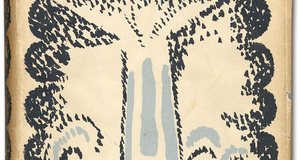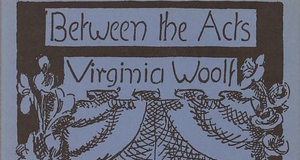Virginia Woolf on the Role of the Artist in the Modern World
By
2010, Vol. 2 No. 02 | pg. 1/1
KEYWORDS:
Virginia Woolf’s To the Lighthouse follows the development of the painter, Lily Briscoe, as she strives to create a meaningful space for her artwork in an increasingly critical and unkind world. Woolf’s stylistic devices, especially those employed in the segment, “Time Passes,” reveal her thoughts on modernity and on pursuing life as an artist in the modern world. In “Time Passes,” Woolf breaks from her traditional literary form to forge a new consciousness for society and introduces the typographical device of the square bracket to write from the point-of-view of an objective outsider. As a consequence, she unites such fragmented, bracketed statements into a uniform understanding of modernity. Woolf changes the structure of her novel in “Time Passes,” abandoning her main characters until the third section of the novel. Instead, she addresses the issues of time and death through a third person narration and shows the pertinence of such topics to a developing artist. Woolf creates a confusing and dark atmosphere while portraying the detrimental effects of time on the Ramsay’s empty house. “Nothing, it seemed, could survive the flood, the profusion of darkness which, creeping in at keyholes and crevices, stole round window blinds, came into bedrooms, swallowed up here a jug and basin, there a bowl of red and yellow dahlias, there the sharp edges and firm bulk of a chest of drawers” (Woolf 125-126). The narration does not stem from the consciousness of one of Woolf’s characters; instead, it represents the rather distant consciousness of a third person narrator. Woolf’s diction adds to the eeriness of the image; instead of the lighthouse’s glow, darkness reigns within the Ramsay’s house. The narrator further acknowledges the destructive nature of time and owns that nothing can escape it. Later, the narrator alludes to the anxiety and confusion produced as time ruthlessly goes on. “Not only was furniture confounded; there was scarcely anything left of body or mind by which one could say, ‘This is he’ or ‘This is she’” (126). Woolf paints a lucid picture of a modern world lacking consciousness. She hints that humans act as indifferently as the furniture in an empty house, or as apathetically as time. The passage’s tone grows increasingly dark as she describes the fading away of consciousness among humans. Indeed, it reflects a major theme of her novel: the idea that humans live in relative isolation, forgetting that they live in a world with other humans who experience similar emotions, confront similar sufferings, and share the common fate of death. In modern times, Woolf suggests, humans become less aware of each other and less aware of how to treat each other. The modern world seeks revival, but Woolf refrains from providing the key to that revival so soon.Her message culminates in the bracketed sentence at the end of chapter II. “[Here Mr. Carmichael, who was reading Virgil, blew out his candle. It was midnight.]” (127). Woolf utilizes the brackets to set the statement apart and to force readers to pay more attention to it. Significantly, Carmichael reads Virgil in the midst of trying and confusing times. He turns to the epic poet for a higher wisdom which provides him with the ability to re-orient himself in his own time. As an epic poet, Virgil forged an identity for the ancient culture of Rome and revived the consciousness of the Romans to their identity as a united people during harsh times of war. Woolf emphasizes the necessity of turning to the artist when times become difficult and when forgetting one’s identity and relationship to other people becomes all too easy. She prepares readers for the sadness to come, giving them a strong hint as to an alternative way of dealing with trying times. However, when Carmichael blows out the light, readers lose a little of the hope which Virgil inspired, as they predict an impending suffering. In the third chapter, Woolf describes the season of autumn as it envelopes the still empty abode of the Ramsay Family. “The nights now are full of wind and destruction; the trees plunge and bend and their leaves fly helter skelter until the lawn is plastered with them and they lie packed in gutters and choke rain-pipes and scatter damp paths. Also the sea tosses itself and breaks itself […]” (128). Nature, time, and the seasons emerge as the characters of “Time Passes,” and the destructiveness of each becomes particularly significant for the modern artist. Before illustrating such importance, however, Woolf introduces the first great tragic event of her novel. “[Mr. Ramsay, stumbling along a passage one dark morning, stretched his arms out, but Mrs. Ramsay having died rather suddenly the night before, his arms, though stretched out, remained empty.]” (128). Mr. Ramsay finds himself completely disoriented by the death of his wife. He emerges, like many of the people living in the modern world, a very bewildered individual. Without the guiding light of Virgil, Mr. Ramsay and readers alike stumble in the darkness after Mrs. Ramsay’s death. Woolf places such shocking news in brackets to distance herself from its emotional impact. In the realm of writing, square brackets are often used as a sort of interjection within an author’s original work to relay missing information or to aid in the reader’s perception of the work. By using the square brackets, Woolf essentially remains aloof from her feelings regarding her own mother in order to create her art. Too much emotional involvement limits Woolf in her ability to write; however, she can portray true, deep emotion from a safe distance. In the next chapter, Woolf carefully avoids narrating any of the events leading up to or surrounding Mrs. Ramsay’s death. Unable to directly confront the death of a mother, she contains the horrific reality in brackets, allowing it to exist as an entity separate from herself. Containing such an overwhelming amount of emotion allows Woolf to control her emotions and use them to speak about art in modern times. The calmness which eventually settles in the house reflects the tranquility which Woolf finally experiences upon writing and physically containing her strong emotions within brackets. Then, in chapter VI, spring arrives. Time transitions from the death of winter to the life of spring. With the spring, comes the promise of renewed hope, and Woolf captures such hope in brackets once again. “[Prue Ramsay, leaning on her father’s arm, was given in marriage. What, people said, could have been more fitting? And, they added, how beautiful she looked!]” (131). Woolf displays the bubbly excitement and optimistic outlook of the people involved in Prue’s wedding. The unity of two people in marriage, the promise of a new life lived together, seems enough to ward off the gloom of Mrs. Ramsay’s death. However, Woolf contains the feelings once again, because, like everything else in the material world, emotions represent transitory states of mind. “[Prue Ramsay died that summer in some illness connected with childbirth, which was indeed a tragedy, people said, everything, they said, had promised so well.]” (132). Prue dies, importantly, in childbirth. Thus, Woolf unites life and death, suggesting that one cannot exist without the other. Yet Woolf does not end the suffering there. She recounts the violent death of Andrew Ramsay within the physical constraints of the brackets. “[A shell exploded. Twenty or thirty young men were blown up in France, among them Andrew Ramsay, whose death, mercifully, was instantaneous.]” (133). Woolf’s language takes on a cool, indifferent, and calm attitude; she dissociates from her emotions, but readers face the full brunt of them. Throughout “Time Passes,” Woolf seems very concerned with the cycles of life and death, acknowledging once again the transient nature of the material world. The brackets contain instances of deep, sometimes harrowing emotions, and they allow Woolf to control and manipulate her emotions. Keeping them at bay, she creates a powerful and moving work of art in the form of her novel. Through the bracketed statements dealing with Mrs. Ramsay’s death, Prue’s marriage, Prue’s death, and Andrew’s death, Woolf exhibits her view of modernity and the role of the artist in modern times. The formal elements of her writing style, including her distant narration, portrays Woolf’s unique vision of modernism. Indeed, modern times call for an art that can capture true feeling; yet, the demanding and taxing nature of reality requires modern artists to step back from their emotions. In this manner, they can succeed in artistically representing the world around them. The horror of reality and modernity forces the artist to work form an objective standpoint. For instance, the power of dissociation becomes manifest in Woolf’s ability to write a novel by separating herself from her feelings, dealing with them one by one in brackets which exist externally. Modern writers need to protect themselves, Woolf contends; they can write about the horrors of war and death and suffering, but only from a safe distance. Importantly, Woolf only makes use of the square brackets in “Time Passes,” which points to her concern for the fading away of her particular art in time. However, she holds true to her theme throughout the novel. At the end, the modern artist, Lily Briscoe, powerfully exerts her creative energies only after she acknowledges that time will destroy her painting. Therefore, not only must artists dissociate from their feelings regarding the modern world, they must also detach from their artwork. In other words, they must accept its role in modern times and allow it to fade away when its duty to the community has been depleted. In the last bracketed statement, Mr. Carmichael fulfills his own role as an artist in the modern world. “[Mr. Carmichael brought out a volume of poems that spring, which had an unexpected success. The war, people said, had revived their interest in poetry.]” (134). All this time, then, Carmichael has been composing his own art in the relative darkness. He blows out the candle initially, but he does not leave the world in darkness. His art, like Virgil’s own, will act as a guiding light in the darkness of modern times. In “Time Passes,” Woolf changes the form of her novel to create a new consciousness for her own culture and employs square brackets to contain her emotions and illustrate her view of modernity from the perspective of an objective onlooker. Woolf creates an art of the everyday experience, but only does so through the careful management of her feelings. In “Time Passes,” Woolf’s peculiar style aids in developing the themes of death and the destructiveness of nature and time to stress that people cannot rely on the material world for long-term happiness. However, in the midst of such a glaringly tragic reality, Woolf encourages people to become more conscious of the artists, the keepers of the culture, those with supernatural vision and insight. In difficult times, she urges people to rely on the poets, writers, and painters: the true visionaries who can see the light in the darkness, who can discover hope in the midst of despair, who can produce calmness out of the chaos of uncontrolled emotions, and who can still find beauty in the everyday life of an increasingly violent world. Woolf, Virginia. To the Lighthouse. New York, New York: Harcourt Brace & Company, 1981. 125-134. Suggested Reading from Inquiries Journal
Inquiries Journal provides undergraduate and graduate students around the world a platform for the wide dissemination of academic work over a range of core disciplines. Representing the work of students from hundreds of institutions around the globe, Inquiries Journal's large database of academic articles is completely free. Learn more | Blog | Submit Latest in Literature |


















